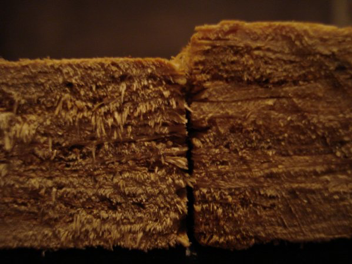By Marcus Kirkwood
“Can I get 10 sheets of ½” plywood??”
So, what is it you’re really looking for? We hear the above question multiple times per day. Our follow up is generally, “Do you want to go with CDX then?” To which we frequently hear, “No, OSB will be fine.” The real question is, does it matter? Is there really even a difference, and if there is, what is it?
.png)
OSB
OSB is no doubt the best bang for your buck. Its structural quality is similar to that of plywood. It holds its shear strength as well as plywood. After many years of development, it has been engineered to be nearly flaw-free as far as engineered lumber is concerned. Across the country, it makes up 70-75% of the market, due mostly to its better value financially. It’s two biggest flaws: aesthetics and water absorption.
Most people who see OSB, and don’t spend their days on a construction site, have great concern overseeing ‘leftover splinters’ being used for their roof, walls, and subfloors. Its poor appearance makes people question is durability and strength. In some cases, OSB can be stronger than plywood because it isn’t possible for there to be knots layered on top of each other, creating a weak spot, like can happen with plywood. As far as water absorption goes, manufacturers have begun covering edges with water-resistant materials. However, those coverages aren’t perfect, and at times allow water it seeps in. In addition, after OSB is cut, it becomes a sponge. OSB can often swell significantly, and, after it swells, it rarely retracts. If you’re OSB is staying dry and aesthetics aren’t your concern, OSB is the cheaper option of the two.

Plywood
If it’s more expensive than OSB what are the advantages of plywood? The three most common are its appearance, it’s variety in options and the ability for treatment. First, plywood looks significantly better than OSB. If this is your final finish, we’d recommend plywood over OSB every time. There’s also a way to upgrade your standard CDX.
Second, you can think of CDX kind of like your grade of plywood. The ‘C’ is the grade of one side, the ‘D’ is the grade of the other and the ‘X’ stands for exterior grade lumber. In the world of plywood, ‘D’ is generally your lowest grade and ‘A’ is the best. The ‘best is classified by the least knots, shown grain, etc. ACX, CDX, and BB Formply are the most common types of plywood sold. AC is used when a very nice finish is necessary. CDX is used as an upgrade over OSB aesthetically, but no, it’s not winning any beauty contests. BB is often used as forming lumber for concrete pours.
.png)
Finally, lumber is often treated for different ratings for pressure and fire. See our other blogs that help explain what all goes into those ratings and why one might need them.
At the end of the day, the choice is still yours. There are applications for each and multiple factors that should determine your decision. If you still have questions, don’t hesitate to reach out. We’re happy to help!
.png&width=880&height=0)